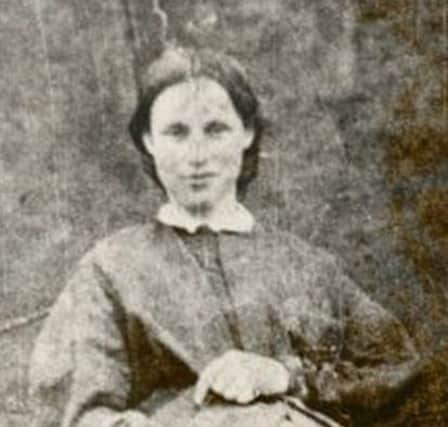Foster daughter of Tasmanian settler from Armagh became national hero


A News Letter reader shared Jacob’s unusual life story, first as a surgeon on a convict ship that sailed to Australia in 1802 and then as an explorer and settler.
Jacob helped to establish Tasmania’s (then called Van Diemen’s Land) first British settlement at Risdon Cove where he farmed and worked as the fledgling community’s doctor.
Advertisement
Hide AdAdvertisement
Hide AdThe darker side of Dr Mountgarrett’s settler-lifestyle included bush ranging, cattle-theft, unpaid debt, stealing medical supplies and murdering Aboriginal natives, whose bones he sent to collectors.
As well as marrying Miss Bridget Edwards in 1811, Jacob’s significant Irish connections were integral to his intriguing life story
In 1815 he was accused of assisting fellow Irish settler Peter Mills with his cattle stealing ventures!
In a heroic, historic incident in 1831 the wonderfully-named Dolly Dalrymple single-handedly fought off a mass-Aboriginal attack on her family home, a story oft recounted in Tasmania’s history books.
Advertisement
Hide AdAdvertisement
Hide AdDolly was Dr Mountgarrett’s adopted daughter, and her heroism was publicised by Captain William Moriarty, a sea-farer from County Kerry who ordered a military investigation into the attack.
A further fascinating Irish link with Tasmania was its Governor between 1913 and 1917.
The country’s top post was held by Dublin-born William Ellison-Macartney, whose lawyer-father was High Sheriff of County Armagh and Member of Parliament for County Tyrone where he had a large estate.
There’ll be more about William here in the near future.
Dolly Dalrymple (circa1808-1864) became an Aboriginal matriarch.
Advertisement
Hide AdAdvertisement
Hide AdShe was born to one of two Aboriginal women who had children with English seal-trapper George Briggs, and was later adopted by several settler couples.
Jacob and wife Bridget fostered her and had her baptised in an Anglican church in 1814.
Even though Dr Mountgarrett was in constant conflict with the legal system for his debts and criminal activities, Dolly was taught all of the required domestic skills, as well as reading, writing and sewing; apparently she was extremely quick to learn.
She was very beautiful, with light-coloured skin and large eyes tinged with blue.
Advertisement
Hide AdAdvertisement
Hide AdAround 1825 and still a teenager she set up home in the very remote Meander Valley with English-convict settler-farmer Thomas Johnson and gave birth to the first of 10 children.
It was a drab and lonely existence; their living quarters were little more than a small slab-hut with a wood-bark roof, coated with a thick blanket of mud and lime to keep out the weather.
Though Thomas was regularly jailed for theft Dolly married him in an Anglican church in 1831 - she was said to have become devoutly religious while being fostered by the Mountgarretts.
Mixed-race marriages like hers weren’t always received too well by either side of the cultural divide and the infamous Black War was at its height, the campaign by the Government to round up the indigenous Aboriginal people.
Advertisement
Hide AdAdvertisement
Hide AdOne day, not long after their wedding, Dolly and her family rose early as usual.
She prepared Thomas’s breakfast before he rode off on his horse to check their cattle.
Dolly began her housework, heard a noise outside and sent her elder daughter Jane to investigate.
She heard Jane screaming, grabbed the family musket and ran outside.
Advertisement
Hide AdAdvertisement
Hide AdShe was horrified to see Jane writhing on the ground with a spear embedded in her thigh.
Dolly tried to carry Jane to the safety of the hut, but had some difficulty because of the spear catching the door post.
But she finally got Jane inside and hurriedly barricaded the door and windows.
From behind their defences Dolly could see that they were being attacked by an angry gang of Aboriginal marauders.
Advertisement
Hide AdAdvertisement
Hide AdShe fired at them with her musket, but with little effect, having nothing but buckshot.
She scanned the surrounding hills desperately hoping to see Thomas although she knew he would not return for several hours.
Then as suddenly as they appeared, the attackers went away, but only to get branches of wood which they lit, and threw on the roof.
But they’d underestimated the fighting spirit of a remarkable woman, and the mud-lime roof which wouldn’t burn!
Advertisement
Hide AdAdvertisement
Hide AdDolly kept them at bay with salvoes of buckshot for six long hours, till her husband came home and drove off the natives.
When Captain William Moriarty, stationed nearby, heard about the incident he sent a detachment of Government troops to the scene.
The Irish-born Captain’s official report about the attack drew government and public attention to Dolly, who became something of a national hero.
In his book ‘The Lost Tasmanian Race’ historian James Bonwick recounted her courage:
Advertisement
Hide AdAdvertisement
Hide Ad“For six hours, she sustained a siege and nobly defended her position. Our heroine fought behind no granite wall, nor was she shielded by a bomb-proof roof. Her castle was a single slab hut.”
Dr Jacob Mountgarrett’s foster-daughter became a celebrity, little Jane’s wounds healed after treatment, and Dolly’s family and farm both prospered and grew. Dolly died aged 56 in December 1864, and whilst her adventure played little part in shaping the future of the colony, the character that she possessed, like so many of the pioneers, played an important part in building the nation.